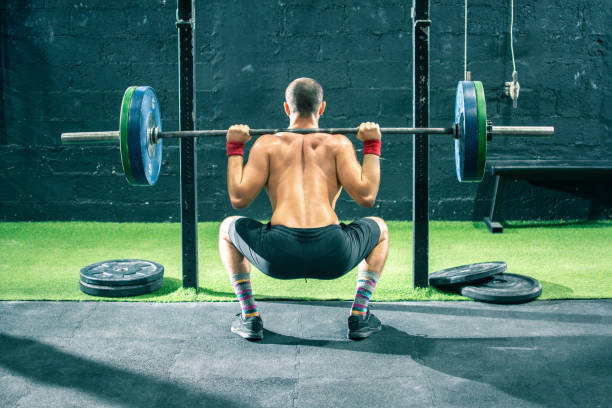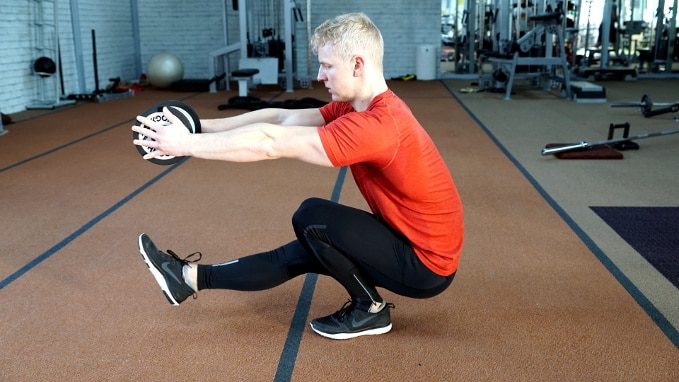2025 XPS Recap!
2025 has been a busy and rewarding year at XPS Network. Working closely with coaches and teams across different...
Read MoreIn every sport, strength training plays such an important role in athlete performance. Stronger athletes get better results.
Strength and conditioning has been around since 1969. Back then, strength wasn’t taken very seriously. In the same way that data in sports wasn’t taken seriously until the early 2000s, when the Oakland Athletics baseball team’s 2002 season demonstrated the impact of data on team performance and picking undervalued players.
In 1969, the University of Nebraska hired Boyd Epley as their first-ever strength and conditioning coach. Other teams didn’t have a similar position on-staff, so when Boyd introduced weight training Nebraska started to get some impressive results. Five national championships were won thanks to Boyd’s revolutionary weights training program.
Pretty soon, professional and semi-pro athletic clubs and teams across numerous sports started to introduce weights training and strength and conditioning coaching across the world. Coaches and athletes everywhere understand the benefits of strength. Stronger players perform better.
However, at the moment there’s a debate going on amongst professional coaches and strength and conditioning experts: What type of strength matters most?
In this article, we are going to take a look at one of the hottest debates in strength and conditioning right now: Bilateral vs. Unilateral Squats: which is better for athletes?
Pros
One of the golden rules of coaching — especially with high-performance, high-value players — is Do Not Hurt The Athlete!
No weight room exercises are without risk. And those who say bilateral training comes without risk are lying to themselves, and the players they’re coaching. Yes, there are several upsides to bilateral training. But there are numerous downsides too. It’s a great way to improve strength outputs, and for those strength increases to transfer onto the field. However, coaches need to be aware of the very clear downsides too.

Cons
One of the reasons too many athletes throw themselves into bilateral training is they feel invincible, especially early in their career. Unfortunately, one way or another, this can cause serious problems. Back injuries are amongst the most common.
Unless the training program accounts for these problems, there are several downsides to bilateral training:
Pros
Unilateral squats are seen as more “sports like”, and a more effective way to build transferable performance. And that’s what really counts, right? Strength should be transferable to on-field performance, otherwise there’s no good reason for players to increase strength in the first place.
This isn’t to say you should only practice unilateral squats. However, when it comes to that all important transferable strength, using the unilateral squat approach is critical as a low-cost way to mimic the hip angles of sprinting.
Research shows that you can achieve the same gains as bilateral squats, without needing to load an athlete up with so many weights. Not only does this achieve the same gains, it reduces the risk to athletes from potential injuries in the weight room, and crucially, on the field.

Cons
At the same time, let’s not forget the main reason athletes need to spend so much time in weight rooms. Improving the amount of FORCE they can apply in competitive games. Gains in the weight room should lead to improvements on the field.
Hence the benefits of bilateral squats. Athletes have more balance, which means more force can go into movements as they’re not worrying about staying on their feet. When standing in a unilateral position, balance is a consideration. If you’re putting energy into maintaining balance, you aren’t going to be able to commit sufficient muscle mass to achieving max strength.
Athletes can put more strength into enhanced voluntary muscle contractions in a bilateral squat position than a unilateral one, making it easier to achieve max strength outputs from training.
Now more than ever, we live in a divided world. A world of strong opinions, but little nuance. People feel the need to hate one thing in order to love whatever they prefer. Republicans versus Democrats, Apple versus Android, masks and vaccines versus the anti-vaxxer movement.
And yet, as coaches, we are all simply trying to get the most from training sessions for the players we are managing, supporting, and coaching. So, instead of picking one over the other, it’s worth considering that both unilateral and bilateral squats should play a role in strength and conditioning training.
Athlete safety has to be taken into consideration too. Coaches should aim to combine the two, gaining the maximum benefits from unilateral and bilateral squats.
Would your team, club, youth association, or sports association benefit from XPS and its wide range of features? Contact XPS Network if you want to find out more, or Sign-up for a Free Trial today.
Research on Nebraska: Shurley JP and Todd JS. “The Strength of Nebraska.” Journal of Strength and Conditioning Research. 2012;26 (12): 3177–3188.
Research on the benefits of Unilateral Squats: Speirs DE, Bennett MA, Finn CV, and Turner AP. “Unilateral vs. Bilateral Squat Training for Strength, Sprints, and Agility in Academy Rugby Players.” Journal of Strength and Conditioning Research. 2016;30(2):386–392.
2025 has been a busy and rewarding year at XPS Network. Working closely with coaches and teams across different...
Read MoreThe International Football Conference 2025, held over three inspiring days at Brøndby Stadium, once again proved why it is...
Read MoreManaging a growing exercise library can be a grind. Adding new drills one by one? Slow. Re-tagging the same...
Read MoreThank you!
Our representative will get back to you soon with time suggestions for an online meeting.
If you have any questions contact us at support@sidelinesports.com
Schedule a short online meeting with our representative
Try free XPS 14-days trial right now No credit card required